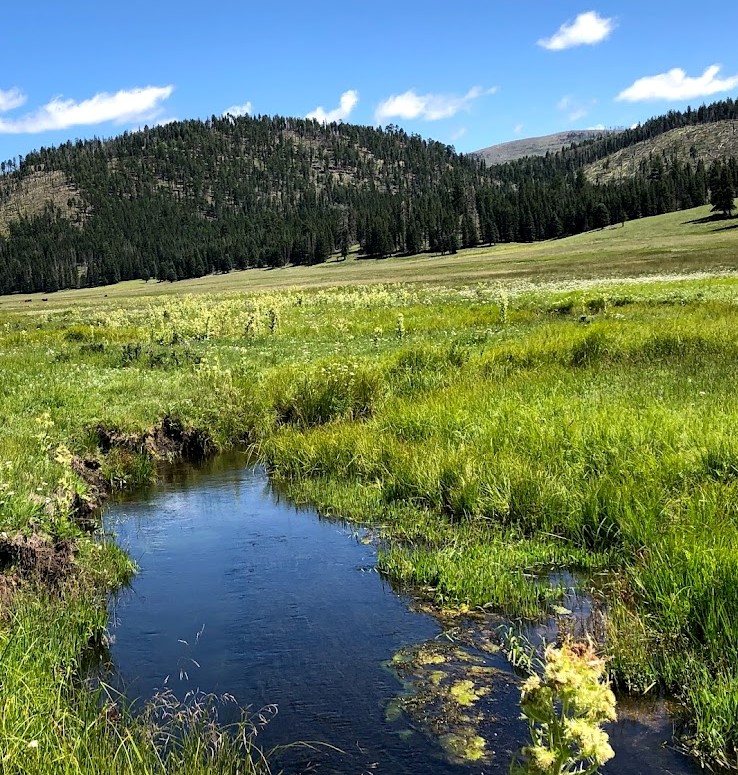The first pictures from the new James Webb Telescope – mind-blowing insights to our universe.
This week, the first images from the James Webb Space Telescope (JWST) were released by NASA. The telescope replaces the Hubble, with a much larger mirror geared to infra-red wavelengths which can (1) pass through dust clouds, and (2) recognize older stars and galaxies by their red-shifts.
JWST was a $10 billion joint effort between the space agencies of US, Canada, and Europe and it was carried aloft by a European rocket on Christmas Day of last December.

Picture 1. Galaxy cluster SMACS 0723. Image credit: NASA, ESA, CSA, and STScI.
How many galaxies can be seen through a grain of sand?
The first picture is a group of galaxies seen in a pixel of sky that is incredibly small – as small as the area of a sand grain held up to the sky at arm’s length.
The light that we see in this picture has been traveling 13 billion years – it took that long for the light from the galaxies to reach earth. That means we are looking at the light from very old galaxies (very old to us) at a time 800 million years after the Big-Bang origin of the universe (the age of the universe is 13.8 billion years) — but light from very young galaxies when referred to the origin of the universe.
In contrast, human civilization has been around only 10,000 years.
The Big-Bang was the start of the universe, a name suggested by Fred Hoyle, a British astronomer. He was convinced of a static universe and did not like to be reminded of a Creator-God. Since then it has been proven that the universe is expanding, and expanding faster and faster – and cosmologists think an unknown energy — the mysterious dark energy — is the cause.
The Big-Bang theory was developed by Georges Lemaitre – an astrophysicist and a Catholic priest – in 1927. However, it wasn’t until 1964 that scientists detected and measured a faint background of microwaves that was left over after the Big-Bang. I was in college in Australia pursuing a degree in physics when this discovery came out.
“Appealing to the new quantum theory of matter, Lemaître argued that the physical universe was initially a single particle—the ‘primeval atom’ as he called it—which disintegrated in an explosion, giving rise to space and time and the expansion of the universe that continues to this day. This idea marked the birth of what we now know as Big Bang cosmology.”

Picture 2: Star nursery. Source: NASA, ESA, CSA, and STScI.
Where stars are born.
Picture 2 shows a nursery for the birth of stars at the edge of a nearby, young, star-forming region in the Carina Nebula. It contains a sparkling display of baby stars.
Credit Klaus Pontoppidan who focused the JWST on this spot in the sky because he knew the “colorful landscape of bubbles and cavities where stars were being born” would be a hit.

Picture 3. Dancing galaxies. Source: NASA, ESA, CSA, and STScI.
Galaxies dancing around a black hole.
Picture 3 shows a group of five galaxies, called Stephan’s Quintet, in the constellation Pegasus. Four of these galaxies suffer repeated close encounters and make it look like a cosmic dance. About a thousand separate images were integrated to form this picture, according to NASA.
A supermassive black hole exists at the center of one of these galaxies and pictures like this may help us understand the massive black hole in the center of our own Milky Way galaxy, called Sagittarius A.
Astrophysicists are hoping to learn from such pictures just how galaxies collide and merge together. Our own Milky Way galaxy was probably created by the merging of 1,000 smaller galaxies.
Finally, JWST also will scan the atmospheres of alien worlds for possible signs of life. Over 5,000 potential planets with life have been identified, called exoplanets, and hundreds of these that may be habitable.
But the methods used are called indirect methods. JWST will be more direct, looking for biosignatures – signatures of life that are held in the light from distant stars that passes through the atmosphere of an exoplanet.
Theory suggests 300 million potential habitable exoplanets in our Milky Way galaxy alone. What are the odds of finding life on at least one other planet?
+++++++++++++++++++++++++++++++++++++++++++++++
The Gray Nomad ….. A time to celebrate magnificent work of scientists and engineers who are unlocking the divine hand of creation.
+++++++++++++++++++++++++++++++++++++++++++++
The heavens declare the glory of God;
the skies proclaim the work of his hands.
Day after day they pour forth speech;
night after night they reveal knowledge.
They have no speech, they use no words;
no sound is heard from them.
Yet their voice goes out into all the earth,
their words to the ends of the world.
[Book of Psalms, chapter 19].
Discover more from Ian Dexter Palmer Ph.D
Subscribe to get the latest posts sent to your email.
